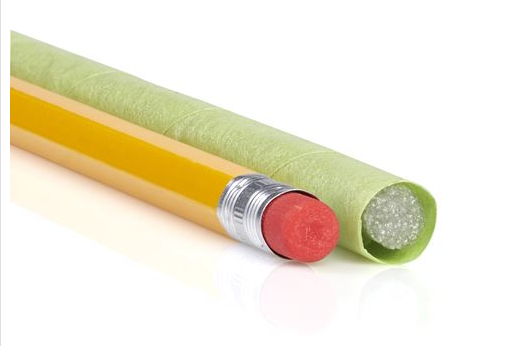Unveiling the Power of Automotive Masking Tape: A Comprehensive Guide

Automotive masking tape is a specialized type of tape designed for use in the automotive industry, particularly for masking off areas of vehicles during painting, detailing, or other automotive work. It is designed to adhere to various surfaces and withstand the conditions encountered in automotive applications, such as exposure to paint, solvents, and temperature variations. Automotive masking tape helps to create clean and precise paint lines while protecting areas that should not be painted or treated during specific automotive processes.
What are the key features of automotive masking tape?
The key features of automotive masking tape include:
Adhesive Strength: Automotive masking tape is designed to have strong adhesive properties to effectively adhere to various surfaces.
Clean Removal: It can be removed cleanly without leaving residue or damaging the underlying surface.
Resistance to Solvents: Automotive masking tape is resistant to solvents commonly used in automotive painting processes.
Temperature Resistance: It can withstand high temperatures encountered during automotive painting and baking processes.
Flexibility: The tape is flexible and can conform to curved and irregular surfaces.
UV Resistance: Some automotive masking tapes offer UV resistance for outdoor applications.
Different Widths and Lengths: Available in various widths and lengths to suit different masking needs.
These features make automotive masking tape well-suited for the demanding requirements of automotive painting and detailing applications.
How is automotive masking tape different from regular masking tape?
Automotive masking tape differs from regular masking tape in several key ways:
Adhesive Strength: Automotive masking tape typically has stronger adhesive properties to ensure it adheres well to automotive surfaces, especially during painting and detailing processes.
Solvent Resistance: Automotive masking tape is designed to withstand exposure to automotive paints and solvents, whereas regular masking tape may not offer the same level of resistance.
Temperature Resistance: Automotive masking tape is often engineered to withstand high temperatures encountered during automotive painting and baking processes, while regular masking tape may not have the same heat resistance.
Flexibility: Automotive masking tape is designed to be flexible and conform to curved and irregular surfaces commonly found in automotive applications.
Clean Removal: Automotive masking tape is formulated to be removed cleanly without leaving residue or damaging the underlying surface, which is crucial in automotive work.
These differences make automotive masking tape better suited for the specific demands of automotive painting, detailing, and other related tasks compared to regular masking tape.
What are the different types of automotive masking tape available?
The different types of automotive masking tape available include:
Crepe Paper Masking Tape: This type of tape is commonly used for general purpose masking, painting, and automotive refinishing applications.
Fine Line Masking Tape: Fine line tape is used for creating precise and sharp paint lines, often in intricate automotive detailing work.
High-temperature Masking Tape: Designed to withstand high temperatures encountered in automotive painting and baking processes, this type of tape is suitable for use in paint booths and curing ovens.
Foam Masking Tape: Foam masking tape is used to mask gaps and irregular surfaces, providing a seal during painting processes.
UV-resistant Masking Tape: This type of tape offers resistance to ultraviolet (UV) light, making it suitable for outdoor automotive applications.
Specialty Masking Tape: There are also specialty tapes designed for specific automotive applications, such as wheel masking tape, and more.
Each type of automotive masking tape is designed to address specific needs encountered in automotive painting, detailing, and refinishing processes.
What are the best practices for using automotive masking tape?
The best practices for using automotive masking tape include:
Surface Preparation: Ensure that the surfaces to be masked are clean, dry, and free of contaminants to promote proper adhesion.
Proper Application: Apply the masking tape smoothly and evenly, ensuring that it adheres well to the surface without wrinkles or air bubbles.
Edge Sealing: Use a plastic or metal edge sealer tool to firmly press down the edges of the masking tape to prevent paint bleed and ensure clean paint lines.
Removal Timing: Remove the masking tape at the appropriate time, following paint manufacturer's recommendations to avoid lifting fresh paint or leaving adhesive residue.
Overlapping Layers: When using multiple layers of masking tape, ensure that they are overlapped carefully to prevent paint seepage between the layers.
Temperature Considerations: Take into account the temperature resistance of the masking tape, especially when using it in high-temperature paint curing processes.
Test Adhesion: Perform an adhesion test on a small area before full application to ensure that the tape adheres well without damaging the surface.
By following these best practices, you can maximize the effectiveness of automotive masking tape and achieve professional results in automotive painting and detailing tasks.
For more info: https://www.tubetape.works/what-it-is
- Industry
- Art
- Causes
- Crafts
- Dance
- Drinks
- Film
- Fitness
- Food
- Games
- Gardening
- Health
- Home
- Literature
- Music
- Networking
- Other
- Party
- Religion
- Shopping
- Sports
- Theater
- Wellness
- News


